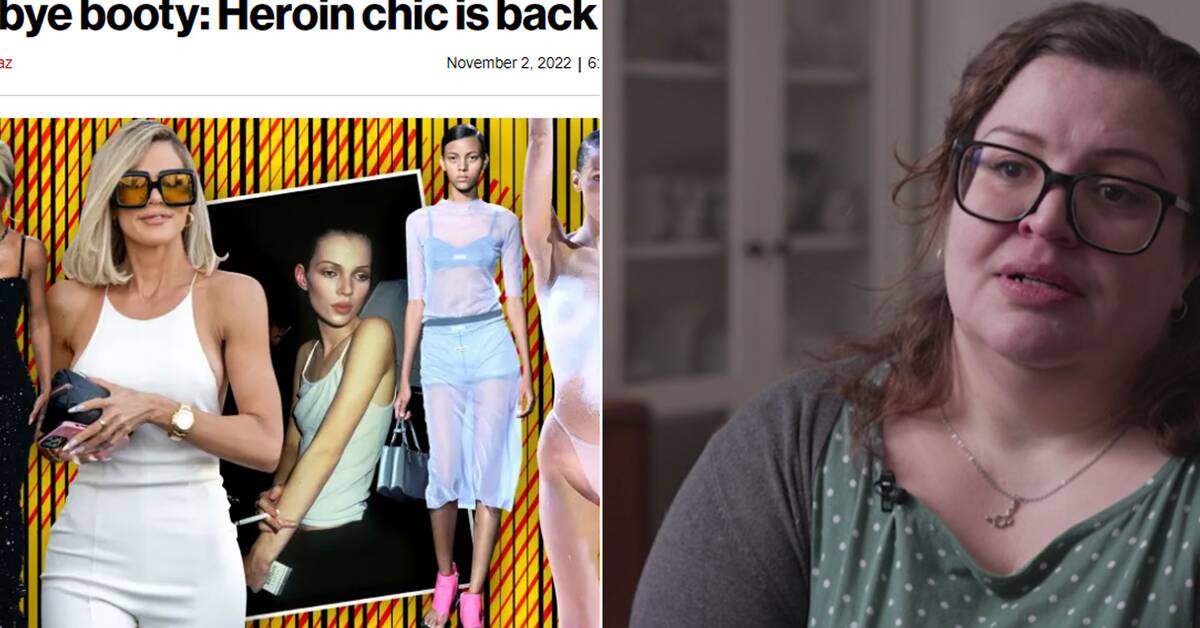This may be a commercial reaction to the home life with extra pounds and elastic pants that flourished during the pandemic, according to Skott.
- The setback during and after the pandemic was probably about the fact that for a while you could sell sweatpants to people who found a new lifestyle, but then you want to sell new things and then you have to go back to old tricks, says Julia Skott.
The word body activism reached its medial peak in the years before the pandemic.
According to a C thesis from 2019 by Mikaela Wikström, use increased significantly between 2015 and 2018. After 2019, use in the media has become less common.
Heroin chic is making a comeback?
Another body ideal that has become all the more rewritten since the New York Post newspaper announced that "the trend is back" at the end of 2022 is "heroin chic".
- It was a trend that was at its peak in the 90s and consisted of models looking malnourished and as if they had been partying for several days straight, says culture journalist Caroline Hainer.
She says that the trend has often been referred to as pure thinness, but that it was rather a backlash against an exercise-obsessed, happy 80s.
She sees today's revelations that heroin chic is back as a potential backlash against similar phenomena in the 10s and 20s: wellness trends and exercise as an ideal of health.
Narrowness as the norm
- But also towards something darker - it could be a counter-trend towards something that has dominated the fashion world: body positivity and plus size models.
When something comes and threatens actual change, fears arise and there is a backlash, says Caroline Hainer.
Julia Skott believes that the waning existence of body activism risks leading to reduced acceptance of larger bodies.
- There is a lot of research that shows that if you get to see different kinds of bodies, you become positively or neutrally disposed towards the body.
If you see a lot of thin bodies, you start to see it as the norm, she says.

